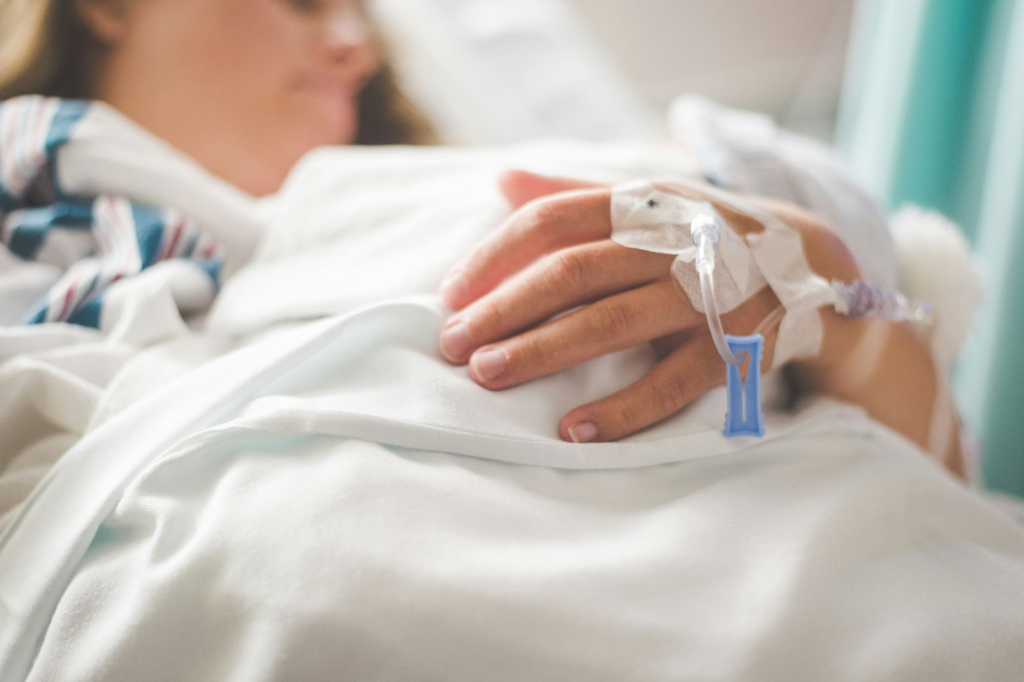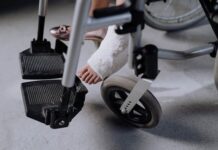
Photo by Stephen Andrews on Unsplash
Stroke can be a devastating condition, and stroke victims can be left with a significant decline in physical and cognitive functions. If your loved one has suffered a stroke, fortunately, there are treatment options that hold promise in aiding stroke recovery.
In this article, we’ll discuss stroke stroke risk factors and how to recognize stroke symptoms. We’ll also discuss what to expect if your loved one has a stroke and treatments that can help them recover.
What is a stroke, exactly?
A stroke is a condition where there is a lack of blood flow to the brain, depriving the brain of oxygen and killing brain cells. There are several different types of strokes.
Ischemic Stroke
An ischemic stroke is caused by a blockage in a blood vessel that supplies blood to the brain.
Hemorrhagic Stroke
A hemorrhagic stroke is a severe type of stroke that occurs when a blood vessel ruptures in the brain, causing uncontrollable bleeding.
Transient Ischemic Attack (TIA)
A transient ischemic attack is also called a mini-stroke. It’s when blood flow is blocked temporarily, causing stroke-like symptoms. Sufferers of a transient ischemic attack should still seek medical assistance immediately.
Post-Stroke Expectations
Post-stroke symptoms depend largely on the severity and type of stroke, but in general, stroke victims may experience:
- Weakness
- Paralysis on one side of the body
- Difficulty forming speech
- Cognitive decline
- Emotional/behavioral changes
People who’ve suffered a stroke can regain some cognitive and physical abilities through occupational therapy, physical therapy and medications. Treatment using stem cells for stroke also shows great promise in stroke recovery.
Identifying Stroke Risk Factors
By identifying stroke risk factors, you can prevent a stroke before it happens. High blood pressure and heart disease are key risk factors for stroke as they affect blood flow. Obesity, low physical activity and poor lifestyle choices such as smoking and alcohol abuse are also risk factors for stroke.
Recognizing Stroke Symptoms
Understanding the symptoms of a stroke and knowing when to recognize them can help you get fast assistance if you or a loved one has a stroke. The acronym FAST can help you remember stroke symptoms and take appropriate action:
- Face drooping (or face is numb)
- Arm weakness
- Speech difficulty
- Time to call emergency services
With a stroke, every passing minute results in dying brain cells. Getting fast treatment can minimize damage or even save a life.
Emergency stroke treatment
As soon as you have symptoms of a stroke, call emergency services. At the hospital, doctors will use an imaging test to determine if the patients are having a stroke.
Doctors first stabilize the patient by controlling the bleeding. For an ischemic stroke, recombinant tissue plasminogen activator (TPA) is administered through an IV to break up blood clots.
Patients may need surgery to remove blood that is causing pressure on the brain or to repair blood vessels. Doctors monitor stroke patients closely for at least a day following the stroke.
Stroke recovery
A stroke can have a debilitating physical, cognitive and emotional impact, but recovery is possible. Stroke rehabilitation programs help patients regain physical and cognitive functions and build a healthy lifestyle that supports recovery.
Medication can prevent blood clotting, while a healthy lifestyle can reduce high blood pressure and support the overall health of a person in recovery.
Using stem cells in stroke treatment also holds great potential in helping stroke patients recover. Clinics like Swiss Medica use mesenchymal stem cells (MSCs) to aid long-term rehabilitation.
MSCs can differentiate into neuron-like cells with immunomodulatory and antioxidant properties. When administered to the patient, MSCs migrate to damaged brain tissue and differentiate into the necessary cells, reducing inflammation, repairing damage and promoting the growth of new neurons.
Stem cell therapy isn’t a magic cure for stroke, but restoring nerve tissue can help patients regain cognitive and physical functions. The effectiveness of stem cell therapy is enhanced when combined with other rehabilitation programs, such as occupational therapy.
While there are some safety and ethical concerns regarding stem cell therapy using embryonic stem cells, MSC therapy for stroke is a safe and ethical treatment option.
In conclusion
If you recognize symptoms like face drooping, arm weakness or difficulty speaking, call emergency services immediately. In emergency care, doctors can control bleeding and remove blood clots to restore oxygen to the brain. Physical and occupational therapy can aid in the recovery of cognitive and physical functions.
Stem cells in stroke treatment can address the underlying brain tissue damage by introducing stem cells that promote the growth of new neurons and reduce inflammation. The growth of new neurons can help restore cognitive and physical functions, improving the quality of life of stroke victims.





